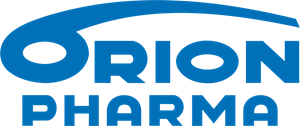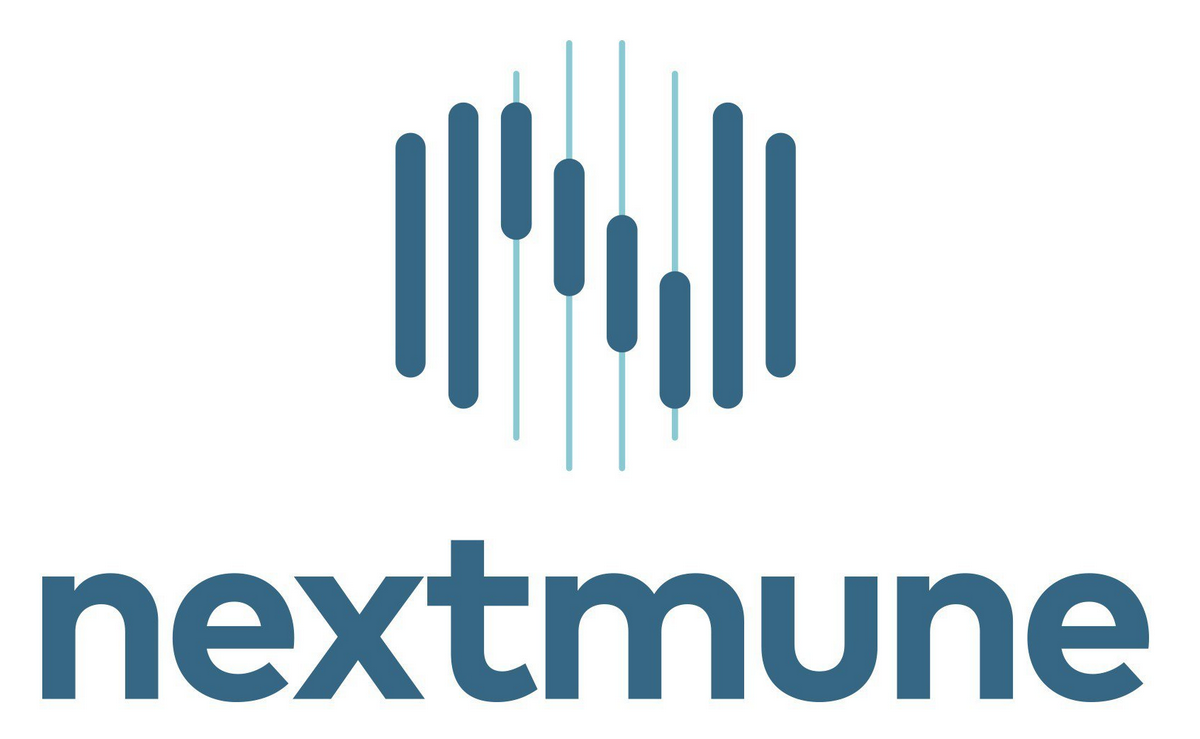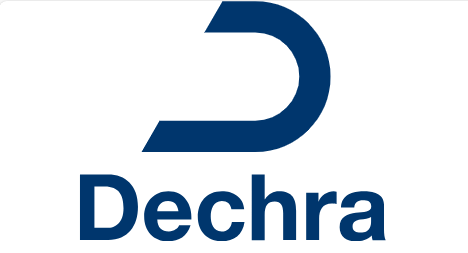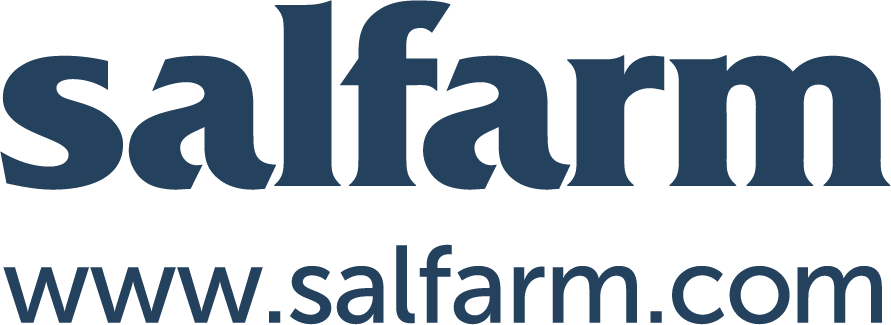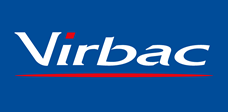Similar packages
IsoFlo vet.
Active substance
ATC code
Species
Horse, dog, cat, ornamental bird, reptile, rat, mouse, hamster, chinchilla, gerbil, guinea pig and ferret.
Indications
Induction and maintenance of general anaesthesia.
Dose to be administered and administration route
Inhalation use.
Isoflurane should be administered using an accurately calibrated vaporiser in an appropriate anaesthetic circuit, since levels of anaesthesia may be altered rapidly and easily.
Isoflurane may be administered in oxygen or oxygen/nitrous oxide mixtures. The MAC (minimal alveolar concentration in oxygen) or effective dose ED50 values and suggested concentrations given below for the target species should be used as a guide or starting point only. The actual concentrations required in practice will depend on many variables, including the concomitant use of other drugs during the anaesthetic procedure and the clinical status of the patient.
Isoflurane may be used in conjunction with other drugs commonly used in veterinary anaesthetic regimes for premedication, induction and analgesia. Some specific examples are given in the individual species information. The use of analgesia for painful procedures is consistent with good veterinary practice.
Recovery from isoflurane anaesthesia is usually smooth and rapid. The analgesic requirements of the patient should be considered before the termination of general anaesthesia.
Although anaesthetics have a low potential for damage to the atmosphere, it is good practice to use charcoal filters with scavenging equipment, rather than to discharge them into the air.
HORSES
The MAC for isoflurane in the horse is approximately 1.31%
Premedication:
Isoflurane may be used with other drugs commonly used in veterinary anaesthetic regimes. The following drugs have been found to be compatible with isoflurane: acepromazine, alfentanil, atracurium, butorphanol, detomidine, diazepam, dobutamine, dopamine, guaiphenesin, ketamine, morphine, pentazocine, pethidine, thiamylal, thiopentone and xylazine. Drugs used for premedication should be selected for the individual patient. However, the potential interactions below should be noted.
Interactions:
Detomidine and xylazine have been reported to reduce the MAC for isoflurane in horses.
Induction:
As it is not normally practicable to induce anaesthesia in adult horses using isoflurane, induction should be by the use of a short acting barbiturate such as thiopentone sodium, ketamine or guaiphenesin. Concentrations of 3 to 5% isoflurane may then be used to achieve the desired depth of anaesthesia in 5 to 10 minutes
Isoflurane at a concentration of 3 to 5% in a high flow of oxygen may be used for induction in foals.
Maintenance:
Anaesthesia may be maintained using 1.5% to 2.5% isoflurane.
Recovery:
Recovery is usually smooth and rapid.
DOGS
The MAC for isoflurane in the dog is approximately 1.28%.
Premedication:
Isoflurane may be used with other drugs commonly used in veterinary anaesthetic regimes. The following drugs have been found to be compatible with isoflurane: acepromazine, atropine, butorphanol, buprenorphine, bupivacaine, diazepam, dobutamine, ephedrine, epinephrine, etomidate, glycopyrrolate, ketamine, medetomidine, midazolam, methoxamine, oxymorphone, propofol, thiamylal, thiopentone and xylazine. Drugs used for premedication should be selected for the individual patient. However, the potential interactions below should be noted.
Interactions:
Morphine, oxymorphone, acepromazine, medetomidine, medetomidine plus midazolam have been reported to reduce the MAC for isoflurane in dogs. The concomitant administration of midazolam/ketamine during isoflurane anaesthesia may result in marked cardiovascular effects, particularly arterial hypotension.
The depressant effects of propranolol on myocardial contractility are reduced during isoflurane anaesthesia, indicating a moderate degree of β-receptor activity.
Induction:
Induction is possible by face mask using up to 5% isoflurane, with or without premedication.
Maintenance:
Anaesthesia may be maintained using 1.5% to 2.5% isoflurane.
Recovery:
Recovery is usually smooth and rapid.
CATS
The MAC for isoflurane in the cat is approximately 1.63%.
Premedication:
Isoflurane may be used with other drugs commonly used in veterinary anaesthetic regimes. The following drugs have been found to be compatible with isoflurane: acepromazine, atracurium, atropine, diazepam, ketamine, and oxymorphone. Drugs used for premedication should be selected for the individual patient. However, the potential interactions below should be noted.
Interactions:
Intravenous administration of midazolam-butorphanol has been reported to alter several cardio-respiratory parameters in isoflurane- induced cats as has epidural fentanyl and medetomidine. Isoflurane has been shown to reduce the sensitivity of the heart to adrenaline (epinephrine).
Induction:
Induction is possible by face mask using up to 4% isoflurane, with or without premedication.
Maintenance:
Anaesthesia may be maintained using 1.5% to 3% isoflurane.
Recovery:
Recovery is usually smooth and rapid.
ORNAMENTAL BIRDS
Few MAC/ED50 values have been recorded. Examples are 1.34% for the Sandhill crane, 1.45% for the racing pigeon, reduced to 0.89% by the administration of midazolam, and 1.44% for cockatoos, reduced to 1.08% by the administration of butorphanol analgesic.
The use of isoflurane anaesthesia has been reported for many species, from small birds such as zebra finches, to large birds such as vultures, eagles and swans.
Drug interactions/compatibilities:
Propofol has been demonstrated in the literature to be compatible with isoflurane anaesthesia in swans.
Interactions:
Butorphanol has been reported to reduce the MAC for isoflurane in cockatoos. Midazolam has been reported to reduce the MAC for isoflurane in pigeons.
Induction:
Induction with 3 to 5% isoflurane is normally rapid. Induction of anaesthesia with propofol, followed by isoflurane maintenance, has been reported for swans.
Maintenance:
The maintenance dose depends on the species and individual. Generally, 2 to 3% is suitable and safe.
Only 0.6 to 1% may be needed for some stork and heron species.
Up to 4 to 5% may be needed for some vultures and eagles.
3.5 to 4% may be needed for some ducks and geese.
Generally, birds respond very rapidly to changes in concentration of isoflurane.
Recovery:
Recovery is usually smooth and rapid.
REPTILES
Isoflurane is considered by several authors to be the anaesthetic of choice for many species. The literature records its use on a wide variety of reptiles (eg. various species of lizard, tortoise, iguanas, chameleon and snakes). The ED50 was determined in the desert iguana to be 3.14% at 35˚C and 2.83% at 20˚C.
Drug interactions/ compatibilities:
No specific publications on reptiles have reviewed compatibilities or interactions of other drugs with isoflurane anaesthesia.
Induction:
Induction is usually rapid at 2 to 4% isoflurane.
Maintenance:
1 to 3% is a useful concentration.
Recovery:
Recovery is usually smooth and rapid.
RATS, MICE, HAMSTERS, CHINCHILLAS, GERBILS, GUNIEA PIGS AND FERRETS
Isoflurane has been recommended for anaesthesia of a wide variety of small mammals.
The MAC for mice has been cited as 1.34%, and for the rat as 1.38%, 1.46% and 2.4%.
Drug interactions/ compatibilities:
No specific publications on small mammals have reviewed compatibilities or interactions of other drugs with isoflurane anaesthesia.
Induction:
Isoflurane concentration 2 to 3%.
Maintenance:
Isoflurane concentration 0.25 to 2%.
Recovery:
Recovery is usually smooth and rapid.
SUMMARY TABLE CONTAINING ANAESTHESIA INDUCTION AND MAINTENANCE DATA BY SPECIES
|
Species |
MAC (%) |
Induction (%) |
Maintenance (%) |
Recovery |
|
Horses |
1.31 |
3.0 – 5.0 |
1.5 – 2.5 |
Smooth and rapid |
|
Dogs |
1.28 |
Up to 5.0 |
1.5 – 2.5 |
Smooth and rapid |
|
Cats |
1.63 |
Up to 4.0 |
1.5 – 3.0 |
Smooth and rapid |
|
Ornamental birds |
See posology |
3.0 – 5.0 |
See posology |
Smooth and rapid |
|
Reptiles |
See posology |
2.0 – 4.0 |
1.0 – 3.0 |
Smooth and rapid |
|
Rats, mice, hamsters, chinchillas, gerbils, guinea pigs and ferrets |
1.34 (mouse) 1.38/1.46/2.40 (rat) |
2.0 – 3.0 |
0.25 – 2.0 |
Smooth and rapid |
Adverse reactions
Horse, dog, cat, ornamental bird, reptile, rat, mouse, hamster, chinchilla, gerbil, guinea pig and ferret.
Rare (1 to 10 animals / 10,000 animals treated) | bradycardia1, arrhythmias |
Very rare (<1 animal / 10,000 animals treated, including isolated reports): | cardiac arrest, hypotension2, respiratory arrest, respiratory depression2, malignant hyperthermia3 |
1 Transient.
2 Dose-related.
3 Susceptible animals.
Reporting adverse events is important. It allows continuous safety monitoring of a veterinary medicinal product. Reports should be sent, preferably via a veterinarian, to either the marketing authorisation holder or its local representative or the national competent authority via the national reporting system. See also the last section of the package leaflet for respective contact details.
Dispensing
POM-V - Prescription Only Medicine – VeterinarianSUMMARY OF PRODUCT CHARACTERISTICS
1. NAME OF THE VETERINARY MEDICINAL PRODUCT
IsoFlo 100% w/w Inhalation Vapour, liquid
2. QUALITATIVE AND QUANTITATIVE COMPOSITION
Each g contains:
Active substance:
Isoflurane 1000 mg
For the full list of excipients, see section 6.1.
3. PHARMACEUTICAL FORM
Inhalation vapour, liquid.
Clear, colourless volatile liquid.
4. CLINICAL PARTICULARS
4.1 Target species
Horse, dog, cat, ornamental bird, reptile, rat, mouse, hamster, chinchilla, gerbil, guinea pig and ferret.
4.2 Indications for use, specifying the target species
Induction and maintenance of general anaesthesia.
4.3 Contraindications
Do not use in cases of known susceptibility to malignant hyperthermia. Do not use in cases of hypersensitivity to the active substance.
4.4 Special warnings for each target species
The ease and rapidity of alteration of the depth of anaesthesia with isoflurane and its low metabolism, may be considered advantageous for its use in special groups of patients such as the old or young, and those with impaired hepatic, renal or cardiac function.
4.5 Special precautions for use
Special precautions for use in animals
Isoflurane has little or no analgesic properties. Adequate analgesia should always be given before surgery. The analgesic requirements of the patient should be reviewed again before the general anaesthesia has ended.
Isoflurane causes depression of the cardiovascular and respiratory systems.
It is important to monitor pulse quality and rate in all patients. The use of the product in patients with cardiac disease should only be considered after a benefit risk assessment by the responsible veterinary surgeon. In the case of cardiac arrest, complete cardiopulmonary resuscitation should be performed.
It is important to monitor respiratory rate and quality. It is also important to maintain an open airway and to properly oxygenate tissues during the maintenance of anaesthesia. Respiratory arrest should be treated by assisted ventilation.
The metabolism of isoflurane in birds and small mammals can be affected by decreases in body temperature that may occur secondary to a high surface area to body weight ratio. Therefore body temperature should be monitored and kept stable during treatment.
Drug metabolism in reptiles is slow and highly dependent upon environmental temperature. Reptiles may be difficult to induce with inhalation agents due to breath holding.
When using isoflurane to anaesthetise an animal with a head injury, consideration should be given as to whether artificial ventilation is appropriate to help avoid increased cerebral blood flow by maintaining normal CO2 levels.
Special precautions to be taken by the person administering the veterinary medicinal product to animals
Do not breathe the vapour. Users should consult their National Authority for advice on Occupational Exposure Standards for isoflurane.
Operating rooms and recovery areas should be provided with adequate ventilation or scavenging systems to prevent the accumulation of anaesthetic vapour. All scavenging/ extraction systems must be adequately maintained. Adverse effects on foetuses and pregnant animals were observed in laboratory animals. Pregnant and breast- feeding women should not have any contact with the product and should avoid operating rooms and animal recovery areas. Avoid using masking procedures for prolonged induction and maintenance of general anaesthesia.
Use cuffed endotracheal intubation when possible for the administration of IsoFlo during maintenance of general anaesthesia.
Care should be taken when dispensing isoflurane, with any spillage removed immediately using an inert and absorbent material e.g. sawdust. Wash any splashes from skin and eyes, and avoid contact with the mouth. If severe accidental exposure occurs remove the operator from the source of exposure, seek medical advice immediately and show the package leaflet or the label to the physician.
Halogenated anaesthetic agents may induce liver damage. In the case of isoflurane this is an idiosyncratic response very rarely seen after repeated exposure.
To the physician: Ensure a patient’s airway and give symptomatic and supportive treatment. Note that adrenaline and catecholamines may cause cardiac dysrhythmias.
Special precautions for the protection of the environment
Although anaesthetics have a low potential for damage to the atmosphere, it is good practice to use charcoal filters with scavenging equipment, rather than to discharge them into the air. iii) Other precautions:
Not applicable.
4.6 Adverse reactions (frequency and seriousness)
Horse, dog, cat, ornamental bird, reptile, rat, mouse, hamster, chinchilla, gerbil, guinea pig and ferret.
|
Rare (1 to 10 animals / 10,000 animals treated) |
bradycardia1, arrhythmias |
|
Very rare (<1 animal / 10,000 animals treated, including isolated reports): |
cardiac arrest, hypotension2, respiratory arrest, respiratory depression2, malignant hyperthermia3 |
1 Transient.
2 Dose-related.
3 Susceptible animals.
Reporting adverse events is important. It allows continuous safety monitoring of a veterinary medicinal product. Reports should be sent, preferably via a veterinarian, to either the marketing authorisation holder or its local representative or the national competent authority via the national reporting system. See also the last section of the package leaflet for respective contact details.
4.7 Use during pregnancy, lactation or lay
Pregnancy:
Use only according to the benefit/risk assessment by the responsible veterinarian. Isoflurane has been safely used for anaesthesia during caesarean section in the dog and cat.
Lactation:
Use only according to the benefit/risk assessment by the responsible veterinarian.
4.8 Interaction with other medicinal products and other forms of interaction
The action of muscle relaxants in man, especially those of the nondepolarising (competitive) type such as atracurium, pancuronium or vecuronium, is enhanced by isoflurane. Similar potentiation might be expected to occur in the target species, although there is little direct evidence to this effect. Concurrent inhalation of nitrous oxide enhances the effect of isoflurane in man and similar potentiation might be expected in animals.
The concurrent use of sedative or analgesic drugs is likely to reduce the level of isoflurane required to produce and maintain anaesthesia.
Some examples are given in section 4.9.
Isoflurane has a weaker sensitising action on the myocardium, to the effects of circulating dysrhythmogenic catecholamines, than halothane. Isoflurane may be degraded to carbon monoxide by dried carbon dioxide absorbents.
4.9 Amount(s) to be administered and administration route
Inhalation use.
Isoflurane should be administered using an accurately calibrated vaporiser in an appropriate anaesthetic circuit, since levels of anaesthesia may be altered rapidly and easily.
Isoflurane may be administered in oxygen or oxygen/nitrous oxide mixtures. The MAC (minimal alveolar concentration in oxygen) or effective dose ED50 values and suggested concentrations given below for the target species should be used as a guide or starting point only. The actual concentrations required in practice will depend on many variables, including the concomitant use of other drugs during the anaesthetic procedure and the clinical status of the patient.
Isoflurane may be used in conjunction with other drugs commonly used in veterinary anaesthetic regimes for premedication, induction and analgesia. Some specific examples are given in the individual species information. The use of analgesia for painful procedures is consistent with good veterinary practice.
Recovery from isoflurane anaesthesia is usually smooth and rapid. The analgesic requirements of the patient should be considered before the termination of general anaesthesia.
Although anaesthetics have a low potential for damage to the atmosphere, it is good practice to use charcoal filters with scavenging equipment, rather than to discharge them into the air.
HORSES
The MAC for isoflurane in the horse is approximately 1.31%
Premedication:
Isoflurane may be used with other drugs commonly used in veterinary anaesthetic regimes. The following drugs have been found to be compatible with isoflurane: acepromazine, alfentanil, atracurium, butorphanol, detomidine, diazepam, dobutamine, dopamine, guaiphenesin, ketamine, morphine, pentazocine, pethidine, thiamylal, thiopentone and xylazine. Drugs used for premedication should be selected for the individual patient. However, the potential interactions below should be noted.
Interactions:
Detomidine and xylazine have been reported to reduce the MAC for isoflurane in horses.
Induction:
As it is not normally practicable to induce anaesthesia in adult horses using isoflurane, induction should be by the use of a short acting barbiturate such as thiopentone sodium, ketamine or guaiphenesin. Concentrations of 3 to 5% isoflurane may then be used to achieve the desired depth of anaesthesia in 5 to 10 minutes
Isoflurane at a concentration of 3 to 5% in a high flow of oxygen may be used for induction in foals.
Maintenance:
Anaesthesia may be maintained using 1.5% to 2.5% isoflurane.
Recovery:
Recovery is usually smooth and rapid.
DOGS
The MAC for isoflurane in the dog is approximately 1.28%.
Premedication:
Isoflurane may be used with other drugs commonly used in veterinary anaesthetic regimes. The following drugs have been found to be compatible with isoflurane: acepromazine, atropine, butorphanol, buprenorphine, bupivacaine, diazepam, dobutamine, ephedrine, epinephrine, etomidate, glycopyrrolate, ketamine, medetomidine, midazolam, methoxamine, oxymorphone, propofol, thiamylal, thiopentone and xylazine. Drugs used for premedication should be selected for the individual patient. However, the potential interactions below should be noted.
Interactions:
Morphine, oxymorphone, acepromazine, medetomidine, medetomidine plus midazolam have been reported to reduce the MAC for isoflurane in dogs. The concomitant administration of midazolam/ketamine during isoflurane anaesthesia may result in marked cardiovascular effects, particularly arterial hypotension.
The depressant effects of propranolol on myocardial contractility are reduced during isoflurane anaesthesia, indicating a moderate degree of β-receptor activity.
Induction:
Induction is possible by face mask using up to 5% isoflurane, with or without premedication.
Maintenance:
Anaesthesia may be maintained using 1.5% to 2.5% isoflurane.
Recovery:
Recovery is usually smooth and rapid.
CATS
The MAC for isoflurane in the cat is approximately 1.63%.
Premedication:
Isoflurane may be used with other drugs commonly used in veterinary anaesthetic regimes. The following drugs have been found to be compatible with isoflurane: acepromazine, atracurium, atropine, diazepam, ketamine, and oxymorphone. Drugs used for premedication should be selected for the individual patient. However, the potential interactions below should be noted.
Interactions:
Intravenous administration of midazolam-butorphanol has been reported to alter several cardio-respiratory parameters in isoflurane- induced cats as has epidural fentanyl and medetomidine. Isoflurane has been shown to reduce the sensitivity of the heart to adrenaline (epinephrine).
Induction:
Induction is possible by face mask using up to 4% isoflurane, with or without premedication. Maintenance:
Anaesthesia may be maintained using 1.5% to 3% isoflurane.
Recovery:
Recovery is usually smooth and rapid.
ORNAMENTAL BIRDS
Few MAC/ED50 values have been recorded. Examples are 1.34% for the Sandhill crane, 1.45% for the racing pigeon, reduced to 0.89% by the administration of midazolam, and 1.44% for cockatoos, reduced to 1.08% by the administration of butorphanol analgesic.
The use of isoflurane anaesthesia has been reported for many species, from small birds such as zebra finches, to large birds such as vultures, eagles and swans.
Drug interactions/compatibilities:
Propofol has been demonstrated in the literature to be compatible with isoflurane anaesthesia in swans.
Interactions:
Butorphanol has been reported to reduce the MAC for isoflurane in cockatoos. Midazolam has been reported to reduce the MAC for isoflurane in pigeons.
Induction:
Induction with 3 to 5% isoflurane is normally rapid. Induction of anaesthesia with propofol, followed by isoflurane maintenance, has been reported for swans.
Maintenance:
The maintenance dose depends on the species and individual. Generally, 2 to 3% is suitable and safe.
Only 0.6 to 1% may be needed for some stork and heron species.
Up to 4 to 5% may be needed for some vultures and eagles.
3.5 to 4% may be needed for some ducks and geese.
Generally, birds respond very rapidly to changes in concentration of isoflurane.
Recovery:
Recovery is usually smooth and rapid.
REPTILES
Isoflurane is considered by several authors to be the anaesthetic of choice for many species. The literature records its use on a wide variety of reptiles (eg. various species of lizard, tortoise, iguanas, chameleon and snakes). The ED50 was determined in the desert iguana to be 3.14% at 35˚C and 2.83% at 20˚C.
Drug interactions/ compatibilities:
No specific publications on reptiles have reviewed compatibilities or interactions of other drugs with isoflurane anaesthesia.
Induction:
Induction is usually rapid at 2 to 4% isoflurane.
Maintenance:
1 to 3% is a useful concentration.
Recovery:
Recovery is usually smooth and rapid.
RATS, MICE, HAMSTERS, CHINCHILLAS, GERBILS, GUNIEA PIGS AND FERRETS
Isoflurane has been recommended for anaesthesia of a wide variety of small mammals.
The MAC for mice has been cited as 1.34%, and for the rat as 1.38%, 1.46% and 2.4%.
Drug interactions/ compatibilities:
No specific publications on small mammals have reviewed compatibilities or interactions of other drugs with isoflurane anaesthesia.
Induction:
Isoflurane concentration 2 to 3%.
Maintenance:
Isoflurane concentration 0.25 to 2%.
Recovery:
Recovery is usually smooth and rapid.
SUMMARY TABLE CONTAINING ANAESTHESIA INDUCTION AND MAINTENANCE DATA BY SPECIES
|
Species |
MAC (%) |
Induction (%) |
Maintenance (%) |
Recovery |
|
Horses |
1.31 |
3.0 – 5.0 |
1.5 – 2.5 |
Smooth and rapid |
|
Dogs |
1.28 |
Up to 5.0 |
1.5 – 2.5 |
Smooth and rapid |
|
Cats |
1.63 |
Up to 4.0 |
1.5 – 3.0 |
Smooth and rapid |
|
Ornamental birds |
See posology |
3.0 – 5.0 |
See posology |
Smooth and rapid |
|
Reptiles |
See posology |
2.0 – 4.0 |
1.0 – 3.0 |
Smooth and rapid |
|
Rats, mice, hamsters, chinchillas, gerbils, guinea pigs and ferrets |
1.34 (mouse) 1.38/1.46/2.40 (rat) |
2.0 – 3.0 |
0.25 – 2.0 |
Smooth and rapid |
4.10 Overdose (symptoms, emergency procedures, antidotes), if necessary
Isoflurane overdose may result in profound respiratory depression. Therefore, respiration must be monitored closely and supported when necessary with supplementary oxygen and/ or assisted ventilation.
In cases of severe cardiopulmonary depression, administration of isoflurane should be discontinued, the breathing circuit should be flushed with oxygen, the existence of a patent airway ensured, and assisted or controlled ventilation with pure oxygen initiated. Cardiovascular depression should be treated with plasma expanders, pressor agents, antiarrhythmic agents or other appropriate techniques.
4.11 Withdrawal period(s)
Horses:
Meat and offal: 2 days
Not authorised for use in mares producing milk for human consumption.
5. PHARMACOLOGICAL PROPERTIES
Pharmacotherapeutic group: Anaesthetic, general - halogenated hydrocarbons.
ATC Vet Code: QN01AB06.
5.1 Pharmacodynamic properties
Isoflurane produces unconsciousness by its action on the central nervous system. It has little or no analgesic properties.
Like other inhalation general anaesthetics of the group of halogenated hydrocarbons, isoflurane depresses the respiratory and cardiovascular systems. Isoflurane is absorbed on inhalation and is rapidly distributed via the bloodstream to other tissues, including the brain. Its blood/gas partition coefficient at 37 °C is 1.4. The absorption and distribution of Isoflurane and the elimination of non-metabolised isoflurane by the lungs are all rapid, with the clinical consequences of rapid induction and recovery and easy and rapid control of the depth of anaesthesia.
5.2 Pharmacokinetic particulars
Metabolism of isoflurane is minimal (about 0.2%, mainly to inorganic fluoride) and almost all of the administered isoflurane is excreted unchanged by the lungs.
6. PHARMACEUTICAL PARTICULARS
6.1 List of excipients
None.
6.2 Major Incompatibilities
Isoflurane has been reported to interact with dry carbon dioxide absorbents to form carbon monoxide. In order to minimise the risk of formation of carbon monoxide in rebreathing circuits and the possibility of elevated carboxyhaemoglobin levels, carbon dioxide absorbents should not be allowed to dry out.
6.3 Shelf life
Shelf life of the veterinary medicinal product as packaged for sale: 3 years
6.4 Special precautions for storage
Do not store above 25°C. Keep the bottle in the outer carton Store in the original bottle.
Keep the bottle tightly closed
Protect from direct sunlight and heat.
6.5 Nature and composition of immediate packaging
Amber coloured glass bottle (Type III). The bottle has an aluminium roll-on pilfer-proof cap with polyethylene liner and a low-density polyethylene neck collar with wing (“keyed” collar), which is fitted over the cap and bottle neck.
Package sizes:
100 ml bottle in a cardboard box
250 ml bottle in a cardboard box
Not all pack sizes may be marketed.
6.6 Special precautions for the disposal of unused veterinary medicinal product or waste materials derived from the use of such products
Any unused veterinary medicinal product or waste materials derived from such veterinary medicinal product should be disposed of in accordance with local requirements.
Medicines should not be disposed of via wastewater.
7. MARKETING AUTHORISATION HOLDER
Zoetis UK Limited
1st Floor, Birchwood Building
Springfield Drive
Leatherhead
Surrey
KT22 7LP
8. MARKETING AUTHORISATION NUMBER
Vm 42058/5102
9. DATE OF FIRST AUTHORISATION
05 March 1996
10. DATE OF REVISION OF THE TEXT
June 2023
PROHIBITION OF SALE, SUPPLY AND/OR USE
Not applicable.
11. CLASSIFICATION OF VETERINARY MEDICINAL PRODUCTS
Veterinary medicinal product subject to prescription.

Approved: 26 June 2023
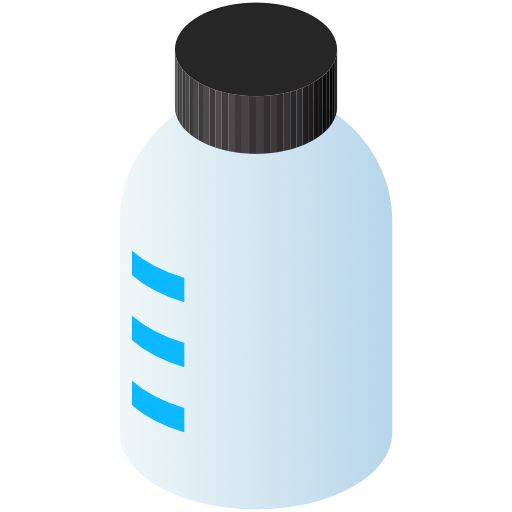
 TRUSTED SOURCE
TRUSTED SOURCE
